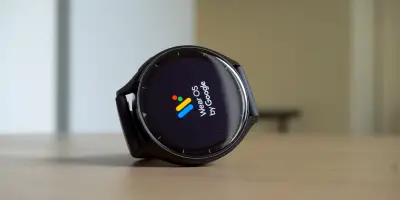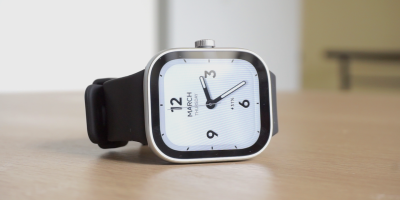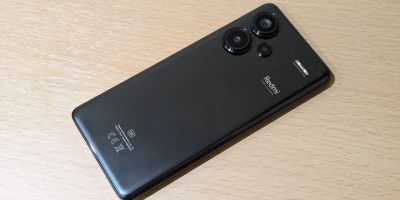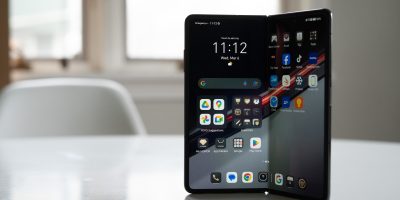If you caught my Pixel 6 Pro review, you probably know that I have mixed feelings about that phone. For those looking for a premium flagship tier device, it does check pretty much all the right boxes. The price is great, as is the software experience, after the first few updates. But I have a few issues with the phone — the main one being this — Google’s own Pixel 6.
There’s a lot to like about this phone, but I think the most interesting aspect of the Pixel 6 is its price. Entry-level flagship devices like the Galaxy S21 from Samsung and the OnePlus 9 made their debut at $799 and $729, respectively. Compared to the 2020 devices they were replacing, the prices were pretty great, especially the Galaxy S21 which was $200 less than its predecessor. But Samsung cut a lot of corners with that device, especially with its build materials, and still didn’t come close to the price of this phone.
So how much is it? A cool $599. For reference, it’s $100 less than the Pixel 5 it’s replacing. Personally, I think the Pixel 5, which was honestly a mid-range device, was extremely overpriced, but that just shows you how much value the new pixel 6 delivers. This phone is essentially the Pixel 6 Pro without the telephoto camera and a slightly smaller display for $300 less.
The differences are a bit more nuanced than that, so let’s walk through them.
Display
As you probably know by now, I’ve never been a fan of large devices. When it comes down to size, the Pixel 6 is the better size for me, but if you’re still wanting a big device, you still get a pretty spacious 6.4-inch display. The smaller display size, when compared to the 6 Pro, does come with a few compromises which include a lower resolution of 2400×1080 pixels and a slower 90Hz refresh rate. Now before you leave a comment about how 90Hz is unacceptable these days, I don’t have any issues with it at all and it still offers a noticeable difference over a device with a 60Hz display. That being said, I am a sucker for higher pixel densities than what this phone offers, but it’s definitely far from being a deal-breaker. As far as positives go, the display is incredibly bright with amazing color reproduction and viewing angle, but my personal favorite feature is that it’s flat, cutting down on glare and allowing for a better typing experience than the 6 Pro.
When it comes to the performance of Google’s new custom Tensor chipset, there’s honestly no difference between the Pixel 6 and the 6 Pro. It does lag a bit behind the Snapdragon 888 when it comes to benchmark numbers, but I haven’t seen a noticeable difference in the real world. Gaming with this phone is excellent as is everyday use with launching apps and multitasking. Hardcore users will gleefully point out that the 8GB of RAM in this phone is inadequate for heavy multitasking, but honestly, after switching to this phone from the Pixel 6 Pro that has 12GB of RAM, I haven’t really noticed a difference. Unless you’re really keeping track of how many apps the phone reloads in a given day, you’ll be perfectly happy with how much RAM this phone has.
Android 12
One of the main attractions of this phone is that it runs a stripped-down version of Android with updates coming directly from Google. If this review would have been published right when the phone came out, I would have left it at that, but if you’ve been following the news, you’re probably aware that Google’s had quite a few issues with the updates that it’s pushed to the phone so far. I’m not gonna get too deep here, but I do want to point out that Google’s updates have had their fair share of issues and the struggle with bugs just as much as any other Android OEM does. But there is a silver lining here. Since Google does push out updates on a monthly basis, the turnaround time in getting issues resolved is substantially faster than the competition.
The latest Android update that was pushed out in the middle of January seems to have resolved most of the obvious issues.
As for Android 12 itself, it’s the most significant update to the operating system in 4-5 years, delivering a brand new aesthetic to the user interface with a lot more personal customization options than we’ve seen in the past. There’s also a lot of work that’s been done under the hood to improve security, like the ability to give apps an approximate GPS position rather than the exact location, control over turning off the mic and cameras on your phone, or even just showing a system-level icon when an app does access them. And then there are the little things like extended screenshots, one-handed mode (which was sorely overdue), more than a dozen new widgets, and their ability to dynamically change colors, just like app icons can — based on the color of the wallpaper you choose.
Android 12 simply feels fun and fresh, but there’s still a bit of polish that’ll most likely be applied once Android 13 rolls around.
Cameras
When reviewing a Pixel smartphone, the main thing that most people really want to know about is how the cameras perform. While I’d like to say that this new phone is leaps and bounds ahead of the competition, the truth is that it’s not.
If you’re not familiar with the specs, the Pixel 6 sports a brand new 50 MP, 1/1.31″ sensor with laser autofocus and OIS. Compared to the Pixel 5, it’s a huge step up. It also delivers a 12MP ultrawide cameras on the back and an 8 MP selfie camera. For those keeping track, the selfie camera didn’t get the same upgrade that the Pixel 6 Pro did and this phone’s also missing the 4x telephoto camera as well. Since there’s a $300 price difference between the two phones, I’m willing to live with just two cameras on the back, but I do think Google made a mistake with the 8MP sensor for the selfie camera, simply because it’s limited to 1080p video capture. We’re living in a world where the selfie camera is used more than ever — especially for video. That being said, it’s still one of the best selfie cameras out there for capturing photos, thanks to Google’s computational photography, so I guess it’s not all bad.
But of course, the big highlight is the new 50MP sensor for the main camera. If you were expecting a dramatic leap forward in imaging quality with the new sensor, you’ll be disappointed. If you’re comparing images from this phone to previous Pixel devices, you’ll notice sharper details and a more pronounced depth of field due to the size of the sensor, but Google’s computational photography really hasn’t changed much. The photos still look incredibly good in nearly every lighting condition thanks to HDR+ that delivers more dynamic range than the human eye.
But that sensor does deliver significant improvements to video capture. Yes, the Pixel 6 can finally rival the video capture capabilities of Samsung’s flagship lineup, but Google’s also applied its computational photography algorithm to video as well, improving contrast, sharpness and dynamic range. It’s honestly a night and day difference when matching up video samples with previous Pixel devices.
Of course, you’ve probably also heard about Google’s neat little tricks like Magic Eraser that automatically detects photos or objects in a photo that can easily be erased from the shot or the motion blur option to add a bit more life to your shot, but they’re honestly just exclusive Google Photos features for Pixel owners.
My only real disappointment is with the field of view offered by the ultrawide camera. WIth its 114˚ field of view, it’s not quite as wide as the 120-123 degree lenses we typically see on other devices. You simply can’t fit as much into the shot as you can with other smartphones and the perspective isn’t quite as dramatic as it could be. The images and video captured with the ultrawide camera still turn out great, but if you’re coming from a device with a wider lens, you’ll definitely notice the difference.
Overall, the cameras on this phone are spectacular for the price. Google is really setting the bar high for the competition, with a device that can go head to head or even outclass ultra-premium flagship devices that cost $300-$500 more when it comes to capturing photos and videos.
Battery life
The last item on the list is the phone’s battery life. The phone’s equipped with a 4614mAh battery which is more than capable of getting you through a full day. On average, the Pixel 6 left me with more than a 20% charge when plugging it in at night after more than 14 hours off the charger.
As for charging itself, it’s pretty slow when compared to pretty much any phone from a Chinese brand, but it’s in line with what you’d expect from a Samsung device, taking 35 minutes to go from zero to 50%, but then another 60 minutes to top it off. And there’s really not much much difference in time when charging the phone with a cable or with a wireless charger. You will need to buy your own charger since the Pixel 6 doesn’t come with one in the box, but you probably have a few dozen on those around your house already, so it’s not a huge deal.
Final thoughts
If all you’re looking at is the spec sheet when compared to the Pixel 6 Pro, the Pixel 6 may seem like a disappointment, but this phone’s $600 price is what really makes it stand out. It may not have all the bells and whistles, but it definitely delivers the best bang for your buck, even in early 2022. The Pixel 6 is definitely my number one recommendation for a smartphone under $1,000. It’s just that good.
Google Pixel 6 Rating: star_fullstar_fullstar_fullstar_fullstar_50 (4.5 / 5)
The Good
- Amazing Price
- Great Cameras
- Good mattery life
- Updates directly from Google
The Bad
- Slow charging
- Software has been buggy
The Bottom Line
If you’re on a tight budget but still want a flagship smartphone, the Pixel 6 is the best bang for you buck, even in early 2022.



































Comments